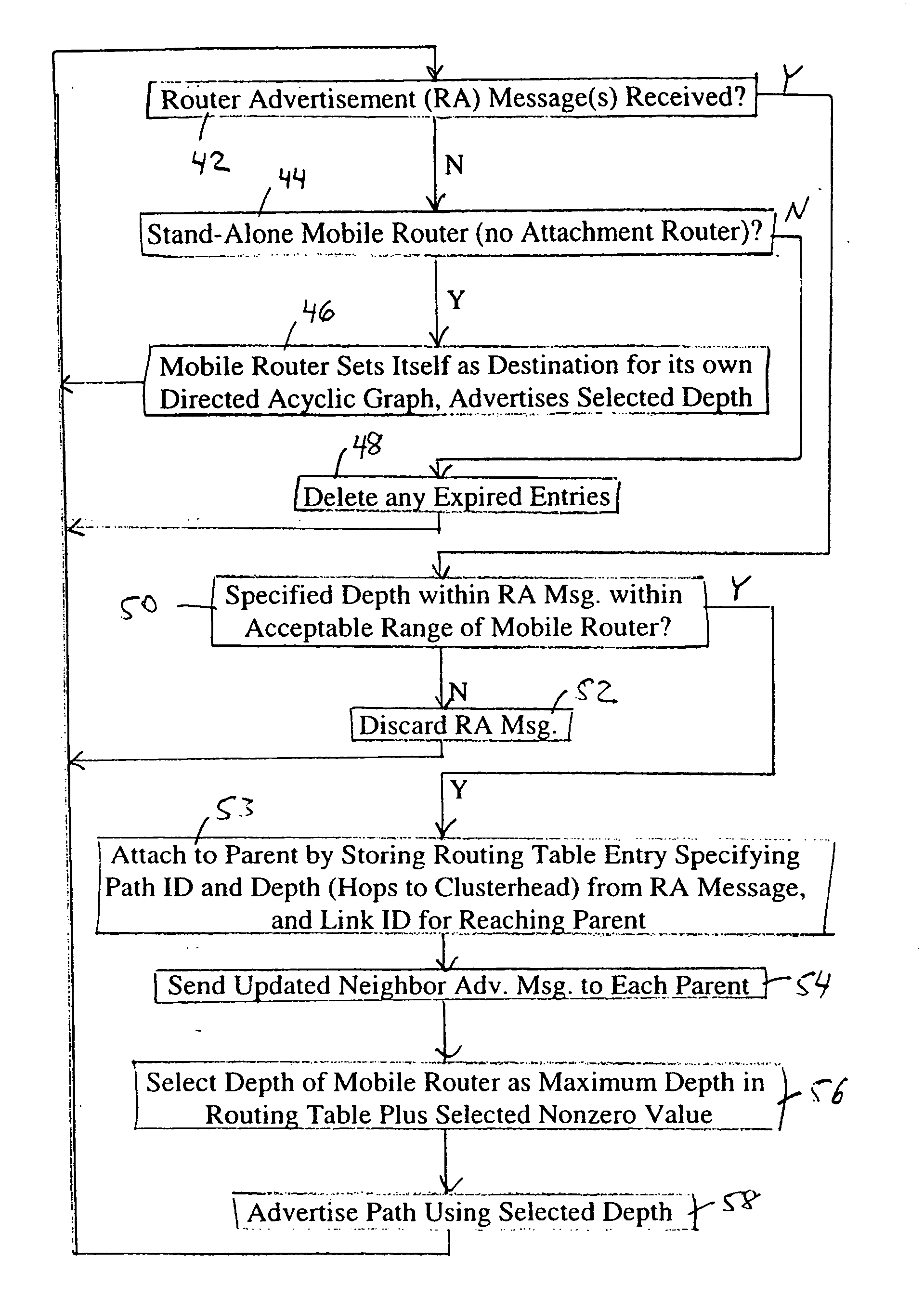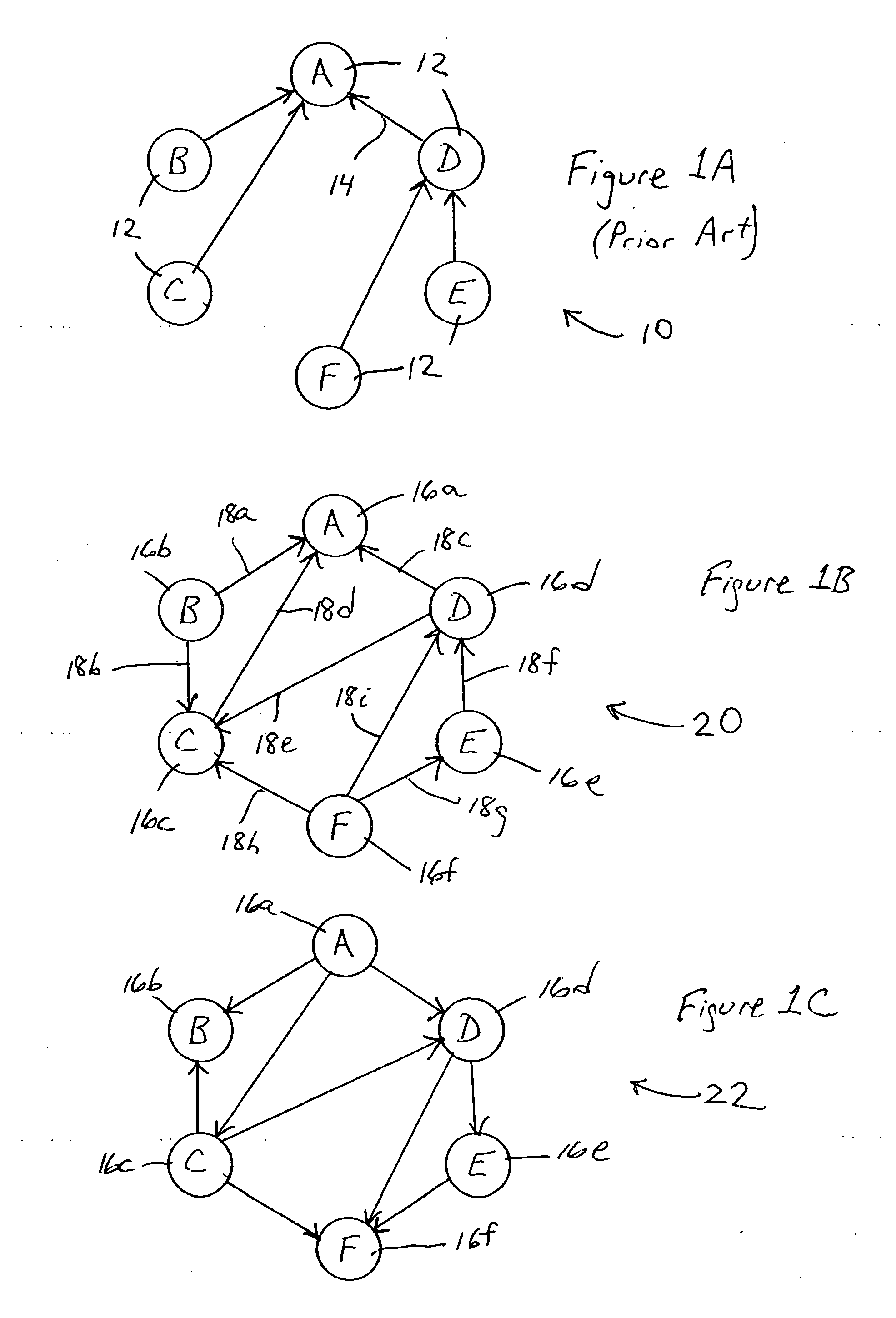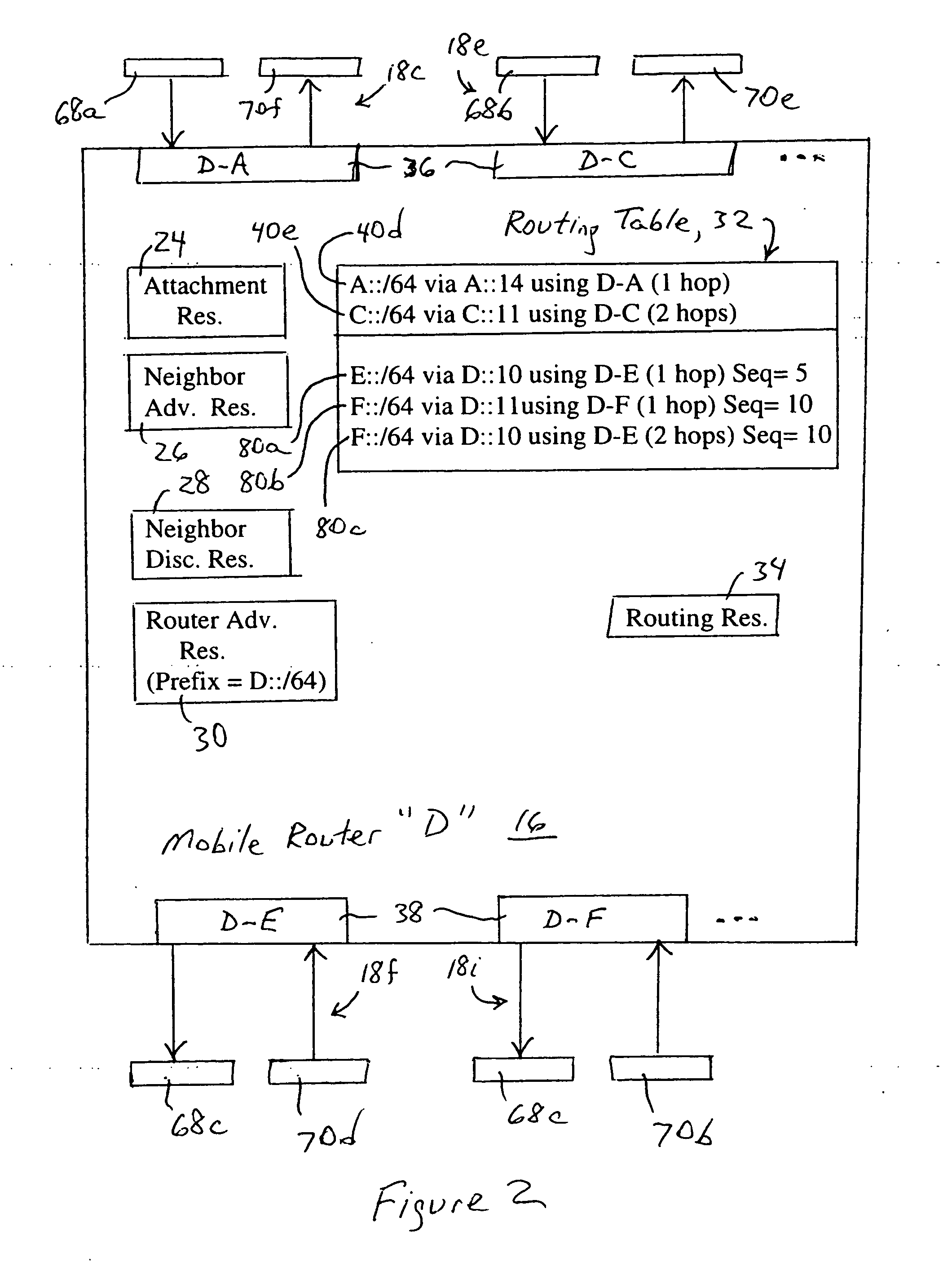Directed acyclic graph discovery and network prefix information distribution relative to a clusterhead in an ad hoc mobile network
a clusterhead and information distribution technology, applied in the field of routing protocols, can solve the problems of difficult modeling and quantifying the characteristics of wireless propagation between a wireless transmission source and a receiver, the network's wireless topology may change rapidly and unpredictably, and the hierarchy is not possible in ad hoc networks
- Summary
- Abstract
- Description
- Claims
- Application Information
AI Technical Summary
Benefits of technology
Problems solved by technology
Method used
Image
Examples
Embodiment Construction
[0037]FIG. 1A is a diagram illustrating an ad hoc network having mobile routers 12 arranged according to a tree topology 10, as described in the U.S. Patent Publication No. US 2004 / 0032852 and the above-incorporated application Ser. No. 10 / 856,809. In particular, the tree topology 10 requires that each mobile router 12 can connect to only one attachment router (e.g., the clusterhead “A”) at any time. The ad hoc network of FIG. 1A has the advantage of rapid convergence based on minimal overhead, however a loss of connectivity between any two mobile routers 12, for example between routers “A” and “D” due to disruption in a link 14, requires a reconfiguration of the tree-based ad hoc mobile network 10 in order to enable the mobile routers “D”, “E”, and “F” to restore connectivity with the clusterhead “A”.
[0038] As illustrated in FIG. 1B, the disclosed embodiment is considered an improvement over the tree-based ad hoc network 10, in that mobile routers 16 (e.g., 16a, 16b, 16c, 16d, 16e...
PUM
 Login to View More
Login to View More Abstract
Description
Claims
Application Information
 Login to View More
Login to View More - R&D
- Intellectual Property
- Life Sciences
- Materials
- Tech Scout
- Unparalleled Data Quality
- Higher Quality Content
- 60% Fewer Hallucinations
Browse by: Latest US Patents, China's latest patents, Technical Efficacy Thesaurus, Application Domain, Technology Topic, Popular Technical Reports.
© 2025 PatSnap. All rights reserved.Legal|Privacy policy|Modern Slavery Act Transparency Statement|Sitemap|About US| Contact US: help@patsnap.com



